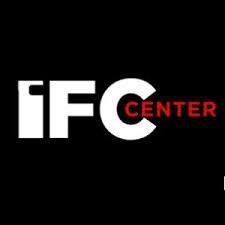As many a U.S. filmgoer is aware, Blue is the Warmest Color, the renowned and controversial French film to be released in the States today, received an NC-17 rating from the Motion Pictures Association of America, an evaluation designated for films deemed “patently adult.” Unbeknownst to many, though, are the contractual specifications between the MPAA and the National Association of Theater Owners (ironically, yes, it’s called NATO), which technically allows the IFC Center theater in NYC, for example, to dismiss the MPAA’s ruling of the above-mentioned film, and permit teenage audience admission.
Rather than a system set up to legally bind exhibitors to follow the evaluative party’s ratings, the current evaluative system of the MPAA was in fact initially implemented as a safeguard against governmental intervention and control; thus, the seeming paradox.
Abdellatif Kechiche, whose film we have covered on several occasions (to see our articles that deal with the film, click here), and distributor, Sundance Selects, which also functions under the IFC umbrella company, refused to recut the film to comply with MPAA standards to receive an R rating. IFC Center senior VP John Vanco, in an article by Variety, echoes the justification of the perseveration of artistic integrity of the film and argues for its usefulness among the teenage demographic. “This is not a movie for young children, but it is our judgment that it is not inappropriate for mature, inquiring teenagers who are looking ahead to the emotional challenges and opportunities that adulthood holds.”
He goes on to claim, “While many people find the MPAA’s recommendations useful, others may look to alternative sources: reviews, recommendations of friends, etc., in making movie choices. The MPAA rating is a voluntary guideline that we as a theater are not obligated to enforce. In this case we feel it is unnecessarily restrictive and we will indeed admit high school age patrons to screenings of this perceptive and moving film at the IFC Center.”
The IFC center’s disregard for the MPAA’s counsel on Blue is the Warmest Color is not the first instance of exhibitor defiance. In fact, a number of exhibitors in the past have taken advantage of the notoriously fickle, seemingly politically-motivated reputation of MPAA rulings (the commission had been known to be much more sensitive to sexuality than violence, for example), instances of insolence often seen as motivated by marketability, among other factors.
No matter the true motivation for the IFC Center’s decision, it is important for both the MPAA and exhibitors to keep in mind the fundamental purpose of the latter’s existence. A NATO rep explains the intended function of the MPAA, claiming, “The voluntary rating system protects people who make and exhibit movies from government intrusion… Exhibitors have an interest in keeping government censorship out of our industry, as well as keeping our bargain with parents to enforce the ratings.” As an executive of an exhibition chain claims, “Everybody is in the same boat…It’s a collective agreement to police our own content. That may be the one thing that studios and exhibitors agree on.”


